The complex of the Addaura Caves is made up of 4 main cavities, located about 70 meters above sea level on the northern slope of Monte Pellegrino facing the sea, southeast of Mondello beach; the caves are all of archaeological interest: Addaura 1 or Perciata (the largest ever, visible even from afar), Addaura 2 or Caprara, Addaura 3 or Grotta delle Incisioni and the Grotta dei Bovidi or Antro Nero. Some of them are rich of flint and quartzite tools (tools used for hunting) and fossil bones of Pleistocene fauna such as dwarf elephants and hippopotamuses (Grotta Caprara and Antro Nero which have palaeontological and palaeontological importance); others present internal karstic phenomena (Perciata and Caprara caves which have speleological importance); only the last two have engraved images and engravings dating back to around 14.000-20.000 years ago. Various species of animals are depicted in the Black Cave (cattle, deer and wild horses), while the Addaura III represents the highest testimony of wall art of the Upper Paleolithic due to the presence of particular human figures, both for the way they are traced (with impressive realism) and for the enigmatic meaning of the scenes represented.
The most important engravings are on the back wall and on the left; they are at a height from a minimum of 1.50 m to a maximum of 3.90 m from the ground, therefore, presumably the original level of occupancy must have been much higher than the current one. The walls receive sufficient light from the outside, precisely because the cave is small, probably used as a place of worship. Over time, the rocky surface has undergone evident karst erosion due to dripping water which makes it difficult to read the graffiti; on the left wall however, many graffiti were eroded by the Paleolithic themselves to superimpose other graffiti, thus deleting the oldest part of the representations of which only the deepest grooves remain. The graffiti represented on this last wall are the ones that have aroused the greatest interest: eleven human figures and one animal are depicted, linked together in two compositions. In the first composition there are ten male figures and one female. The male figures are all bare-bodied, in the act of dancing or standing, with well-pronounced muscular mass that highlights the buttocks, legs and calves, while the hands and feet are completely missing; of these eight with their heads covered by a bird's beak mask (also interpreted by some as a pointed beard) with thick hair and two ithyphallic characters, which form the fulcrum of the scene and which give rise to various interpretations. The latter are in a completely different position from the others, considered lying on the ground or caught in an aerial vault, with slimmer, bald bodies, with a triangular-shaped penis larger than the other figures, according to an interpretation because they have a case tied at the waist by a lace which protects the organ during the execution of the acrobatic jumps. According to some it is an initiation rite or a rite for fertility, for others an acrobatic competition, for others still a human sacrifice for the detail interpreted as a self-strangulation, due to the presence of two segments, one between the shoulder and buttocks of the first character and the other between the shoulder and the feet of the second character, which suggest the pose of the "incaprettati". The female character, on the other hand, is motionless and watches the scene with something dangling along her legs, perhaps an empty sack; the character was intended as female both because it has an incision at the level of the breast which does not appear in the other figures and because it has a rounded head which is similar to another female figure in an evident state of pregnancy who carries a sack on her shoulders, represented in the second composition.
At the bottom are drawn various animals scattered on the wall, partly drawn complete and partly only hinted at: a mare with the foal emerging half-body on her back, a headless horse on which is superimposed a bovid and parts of other horses and finally a running fawn. In general, these graphic representations do not have the same value as the human ones, both for the quality of the line and for the expressiveness of the figures.
Another interesting interpretation of the scene mentioned in the first composition is the one described by paleontologist Maria Laura Leone in her book “The phosphenic Grotta dei Cervi” (2009) according to which the figures have been conceived as if they were in motion and the different characters dancing around the two men lying on the ground are actually one or two characters with a bird's beak mask, in the act of a practice shaman facing the only character on the ground, depicted in a double position, probably in the throes of convulsions or even an epileptic attack, typical of someone chosen as a shaman. The graffiti on the back wall of the cave are all of animals, deer and horses, at times not precisely identifiable due to erosion due to dripping water.
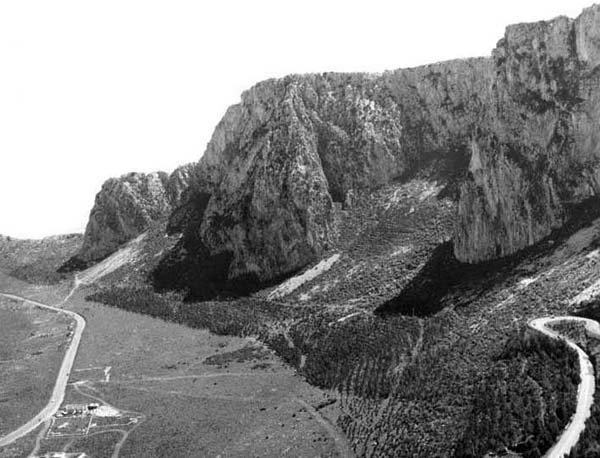
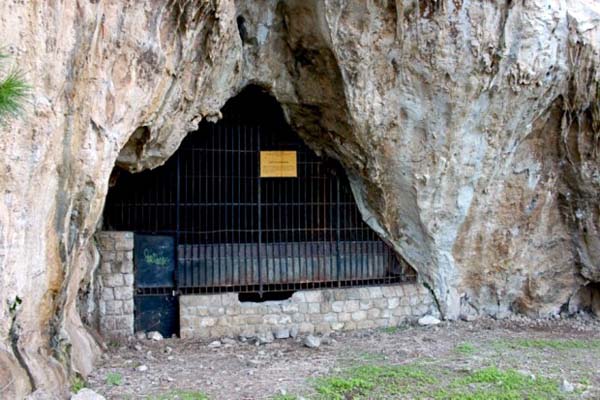
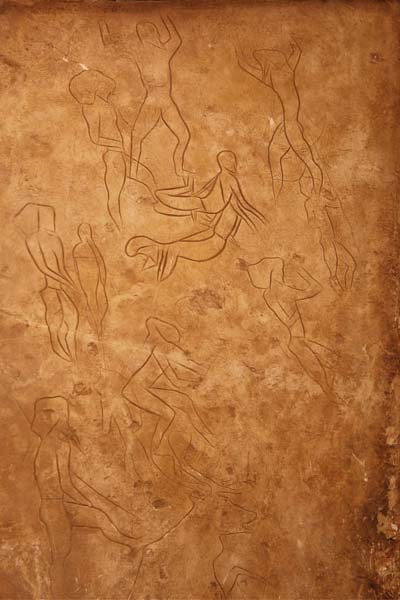
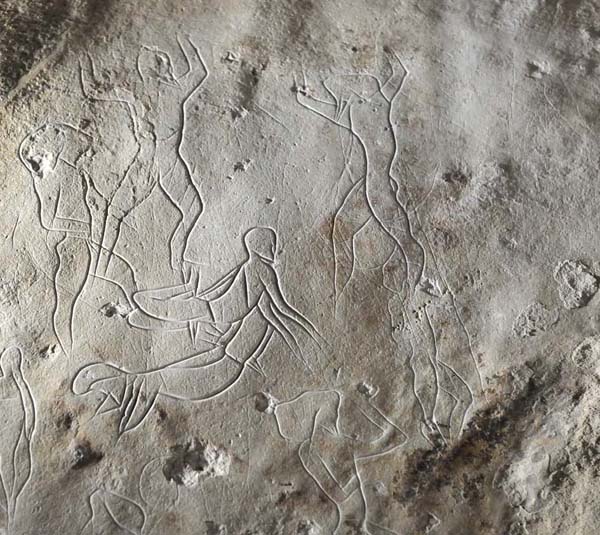
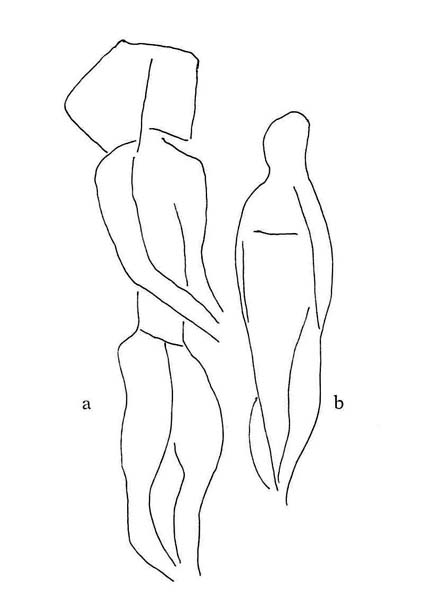
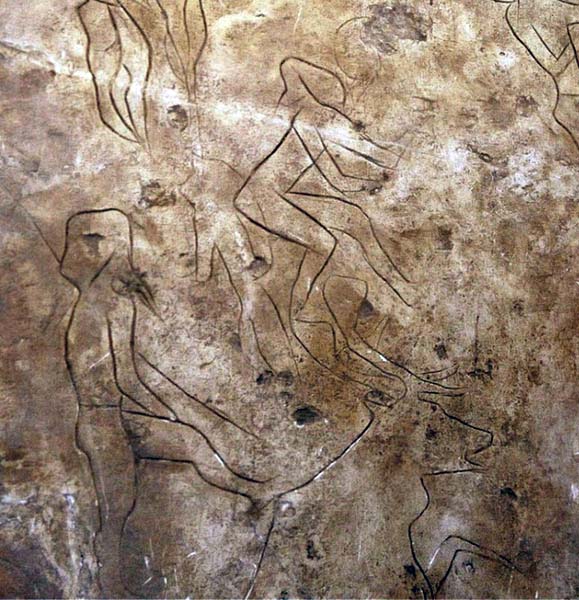
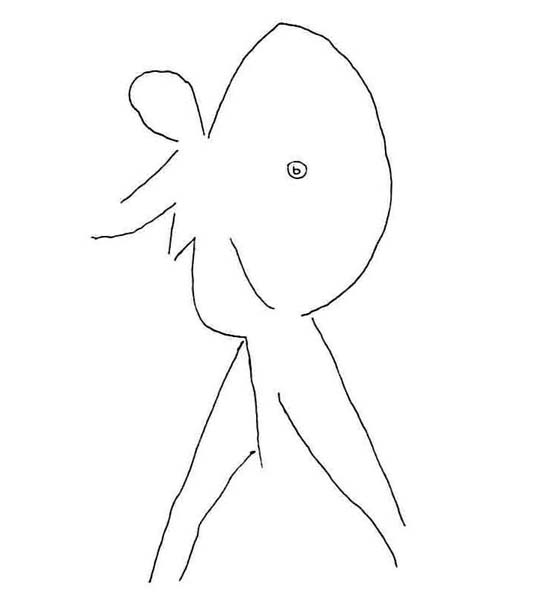
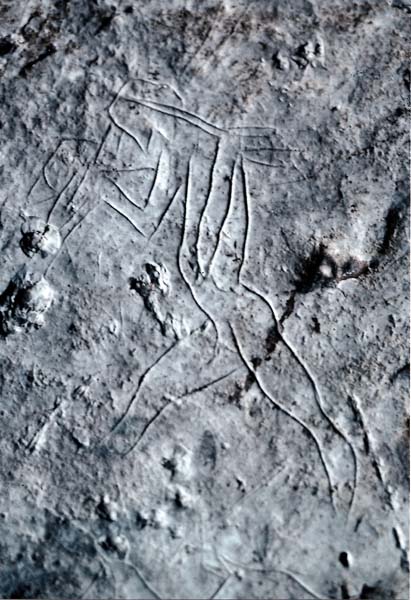
Historical notes
The complex of the Addaura caves was the object of investigation as early as the second half of the 800th century, when deer, horse and ox bones, flint and stone weapons, coal, elephant remains were found in the Addaura Caprara cave. Further research was carried out in 1946 by the Sicilian Superintendent Jole Bovio Marconi with the collaboration of Prof. Bernabò Brea who confirmed the presence on site of a settlement of Paleolithic hunters since the Mesolithic era; they had eaten marine and terrestrial molluscs, vegetables, hunting and working in an agro-pastoral context.
At the time of the investigations, the Addaura III cave was used as a deposit for excavation tools, but no one perceived the existence of the treasure contained therein; only in the spring of 1952 was the discovery of the Palaeolithic rock engravings, a reason that made these caves known to the international scientific world. Their discovery is linked to an anecdote told by Giovanni Mannino, who was an employee of the Superintendence of Palermo at the time of the events. The graffiti had actually already been discovered by a treasure seeker, a certain Giovanni Cusimano who however had never recognized the real value of his discovery. It was only after a fortuitous meeting on the spot with Giosuè Meli (at the time assistant to the Superintendency, the one who had carried out the excavations at the Grotta del Genovese on the island of Levanzo since 1949) and Giuseppe Saccone (enthusiast of archeology) that Mr. Cusimano decided to show them the Grotta dell'Addaura III, where the graffiti panel was finally revealed to the knowledge of the world. Soon after, the Superintendent Jole Bovio Marconi was informed and from that moment he took steps to study and protect this heritage. Excavations were carried out in 1956 which determined the period of occupation of the site, from the Upper Paleolithic to the Mesolithic.
CARD
LATEST PUBLISHED TEXTS
VISIT THE FACTSHEETS BY OBJECT

